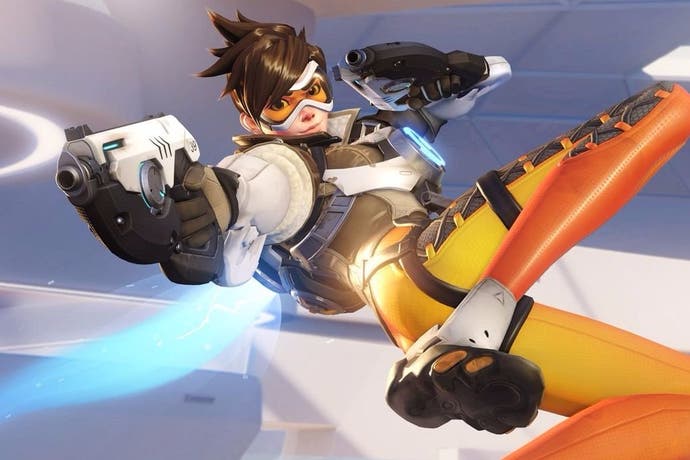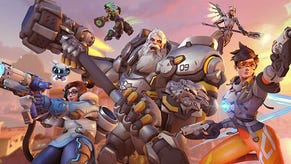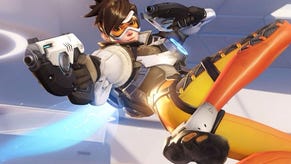Face-Off: Overwatch
Highly polished on all platforms, with PC offering further refinement.
Overwatch's recent open beta was quite unlike any other. Barring the inclusion of competitive play, users were actually sampling the game in its entirety, with any improvements or alterations set to arrive via future updates. As Blizzard said, aside from some bug-fixes, "the version you are playing now is what will go live at launch."
The bottom line: while we will revisit the final game to cross any Is and dot any Ts, we can be confident that this is essentially the same technical experience as the May 24th launch code.
We've already sampled the PS4 and Xbox One versions in the previous beta and little has changed there from a technical perspective. However, the open beta gave us an opportunity to see the online infrastructure given a genuine stress test. The good news is that the experience looks and feels polished with no unexpected issues cropping up during our time with the beta, a state of affairs replicated across all three platforms.
The open beta also gave us a chance to fully experience the PC code, which offers up a more refined experience with improved effects. It's not a revelatory leap over the PS4 and Xbox One versions, but the ability to play at higher frame-rates and resolutions beyond console limits is a worthy improvement. Naturally, we're running at 1080p with our assets in order to match the consoles, but moving up to higher resolutions - like 1440p and 4K - delivers an extra level of sharpness to the presentation that suits the game's clean, arcade-style aesthetic.
The console builds also utilise dynamic resolution scaling to help stabilise frame-rates, but PC image quality at 1080p is also boosted, as the resolution stays locked at whatever setting you choose. This is backed up by the ability to use a higher level of post-process anti-aliasing. SMAA High is the top-level setting here, providing better coverage than the console versions with fewer stair-steps across sub-pixel elements.
Overall, the PC version looks very similar to the console releases when locked to 1080p. The core artwork is identical, and there aren't any dramatic graphical upgrades that really transform the experience. Instead, as with many PC titles today, we're treated to a refinement of effects-work that adds more. All of the usual enhancements are present: shadows are rendered at higher resolutions, anisotropic filtering can be dialled up to 16x (over what looks like 2x on consoles), while LOD streaming is also a touch faster.
Environment reflections are also expanded on PC, with more objects and lights mirrored across shiny surfaces, and the lighting model is given a boost in some locations too. For example, in one of the Hollywood maps, bloom helps to saturate the lighting in the sky. Rounding this off is a high quality depth of field effect that blurs out of focus details more cleanly than the console equivalents.
These upgrades add an extra layer of polish to Overwatch's clean and colourful appearance. But the good news is that the core artwork still holds up well across all platforms, with surfaces realistically reacting to lighting throughout the game. This complements the stylised aesthetic which borrows from both Japanese and Western imagery in order to create an arcade-like feel. Lighting also adds depth and atmosphere to indoor locations, while shifts in exposure showcase high dynamic range effects when moving outside.

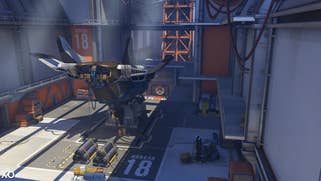

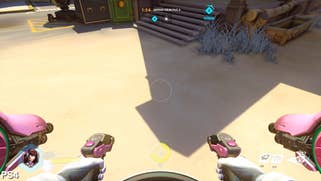
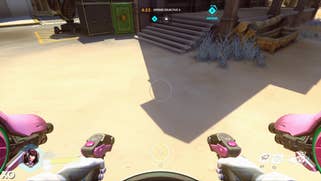


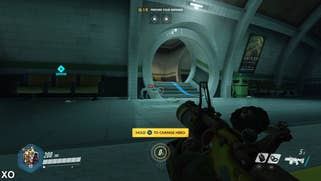

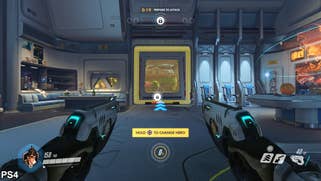
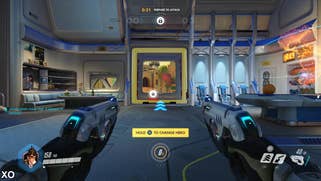
The inclusion of destructible elements dotted around the game's varied environments is another nice touch. Arcade machine screens crack when shot, wooden furniture breaks apart leaving debris scattered across the ground, while bullet holes line the walls after a heated shootout. Other objects, such as toys and balls on tabletops, also react realistically to gunfire. This additional layer of animate detail serves to increase the frenetic nature of the gameplay, better placing the player within the environment as the destruction really kicks off.
Both of the console versions feature a dynamic framebuffer, which hits native 1080p most of the time. Pixel counts are lowered slightly when the engine is under stress, but for the most part the use of resolution scaling is fairly restrained, with drops below 1080p rarely lasting for more than a few seconds before image quality is restored to its fullest. This tends to happen more often on Xbox One, but it's not something that distracts on either platform, and resolution never falls far away from the intended 1080p target once gameplay begins.
Curiously, the Xbox One version often kicks off at 720p - visible on the character select screen and when first appearing on the map - but the engine quickly switches back to 1080p and stays there for extended periods. During some of the most hectic moments of gameplay we actually find both versions delivering a full HD presentation, with neither dropping resolution to a noticeable degree. In that respect, both console builds are pretty solid from a visual perspective and all the fundamental visual elements are closely matched as well. Shadows sometimes stream in a touch later on PS4, but it's not an issue that extends across the entire experience.
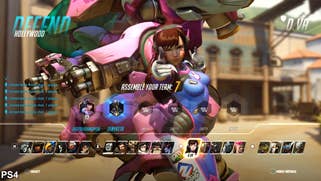
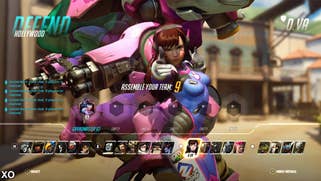




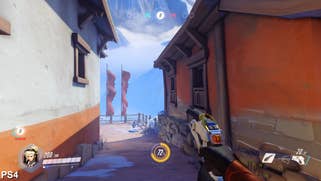

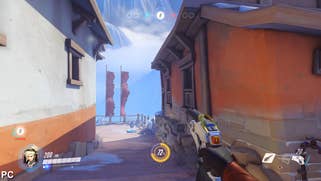
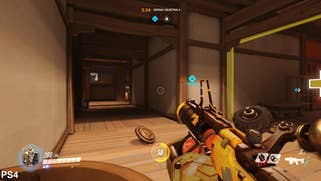
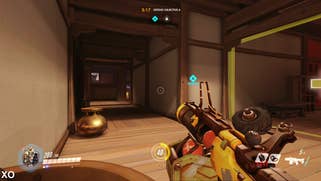
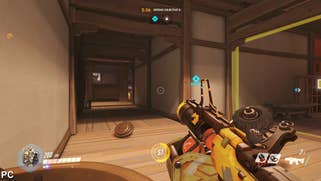
Overwatch perhaps shares more in common with traditional twitch shooters like Team Fortress 2 than it does with other MOBA-esque titles. Controls feel crisp and extremely responsive and the gameplay is consistently fast-paced. Blizzard aims for a 60fps update on consoles and this accommodates the high precision, low latency gameplay very well. Larger characters have a sense of weight while moving and aiming, while nimbler heroes traverse the battlefield more effortlessly.
Both PS4 and Xbox One deliver a solid 60fps for extended periods, with firefights often playing out smoothly. When performance is impacted, an adaptive v-sync is in play, helping to eliminate any large variances in frame-rate, at the expense of introducing screen-tear. PS4 gameplay is rarely interrupted by performance issues, with frame-rate drops mostly occurring during the Killcam, where the player has no control. On Xbox One these lapses can occur during gameplay, leading to some stutter on-screen. The appearance of dropped and torn frames is a little distracting, but thankfully this doesn't last long and a solid 60fps is soon resumed.
Overwatch: the Digital Foundry verdict
The main takeaway here is that both Xbox One and PS4 offer a mostly interchangeable experience, with just a small additional layer of polish evident on the Sony platform. It's a superbly crafted shooter that works beautifully on both systems and it's difficult to believe that any one will be disappointed with what Blizzard has delivered here.
As expected, the PC offers the most refined edition of the game from a visual perspective, with better effects and higher frame-rates, alongside artwork that scales up nicely to 1080p and beyond. There's also the small matter of mouse and keyboard support too, offering up a genuinely transformative effect on the way the game plays. Overwatch is still a treat on both consoles though, with a mostly native 1080p presentation and a smooth 60fps update that only falters on occasion.
But perhaps the biggest takeaway is this: Blizzard effectively gave away the entire game for free on a time-limited basis in order to fully stress-test the title's online infrastructure. In theory at least, the amount of users here should surpass the amount of paying customers online during the crucial launch period, making this a truly challenging test of the game's core foundations. Netcode stability and robust servers are hugely important for a game like this, and it looks like Overwatch is ready to deliver.
For all the latest Overwatch hero, map and gameplay guides, visit our sister site MetaBomb
